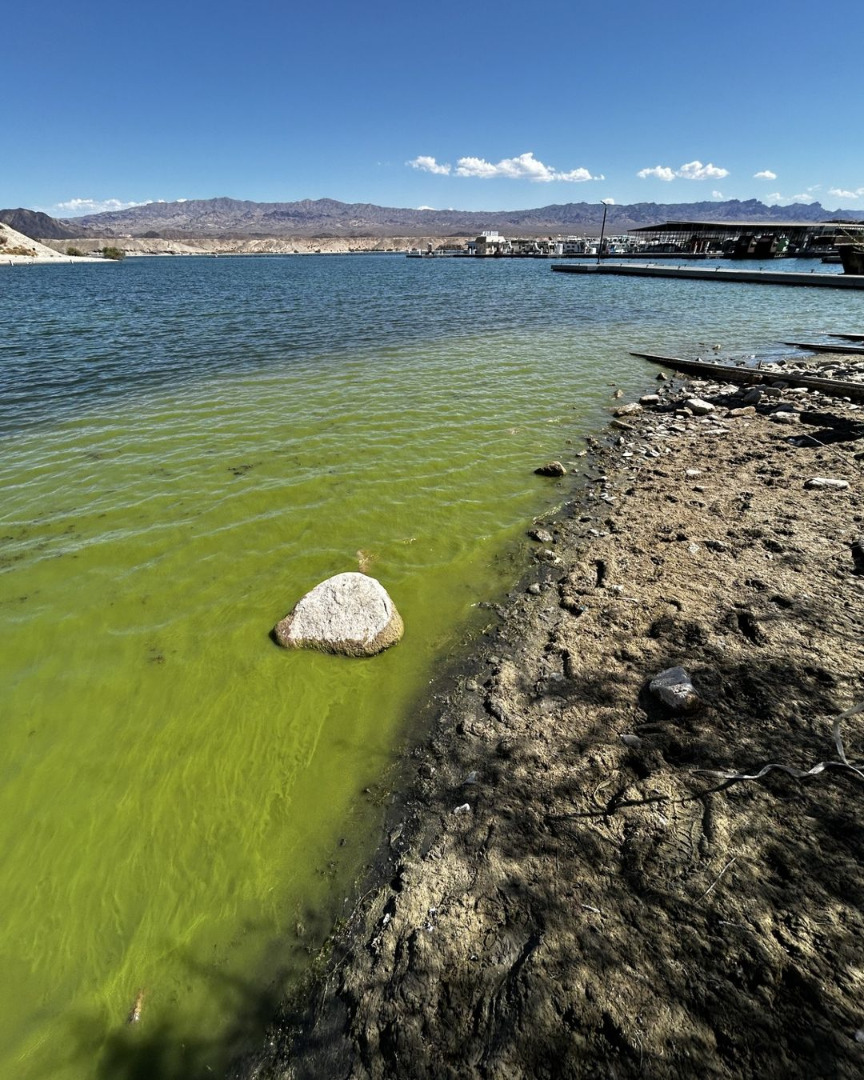Long Range Fish Report
From Sportfishing
From Sportfishing
Fish Report for 10-2-2024

Greenish water with visible algae bloom. A marina in the background.
Photo Credit: 📸NPS/R. Rackliffe
Toxic algae alert for several areas on Lake Mohave
10-2-2024
Lake Mead National Park Service
(UPDATED) Toxic algae alert for several areas on Lake Mohave
In addition to Nelson's Landing and Placer Cove, toxic algae blooms have also been detected at Cottonwood Cove, Six Mile Cove, and out on the open water between Nevada Bay and Arizona Bay. The algae are producing dangerous toxins exceeding safe levels for public contact, as advised by the Nevada Division of Environmental Protection.
What to Look For: Thick green algae floating on the water's surface. It may drift to other coves or areas on Lake Mohave. Algae may appear or disappear within the span of a few hours depending on weather conditions.
Avoid: Swimming or allowing pets to drink from or swim in these areas.
If you or your pets come into contact with the water, rinse off with clean water immediately. Algal toxins are especially dangerous if ingested, so keep pets and animals away from the water. Park biologists are monitoring the situation and will update when it's safe to return.
Toxic algae bloom occur when cyanobacteria multiply quickly, creating blooms that spread across the water’s surface. The blooms might become visible, as seen in the pictures. Cyanobacteria, also called blue-green algae, are microscopic organisms found naturally in fresh and salt water. Algae blooms are more common in summer as bacteria thrive in warm and nutrient rich environments.
Learn more about cyanobacteria and algal blooms: https://www.cdc.gov/harmful-algal-blooms/about/index.html
< Previous Report Next Report >

LongRangeSportfishing.net © 2025. All Rights Reserved.
Website Hosting and Design provided by TECK.net
Website Hosting and Design provided by TECK.net